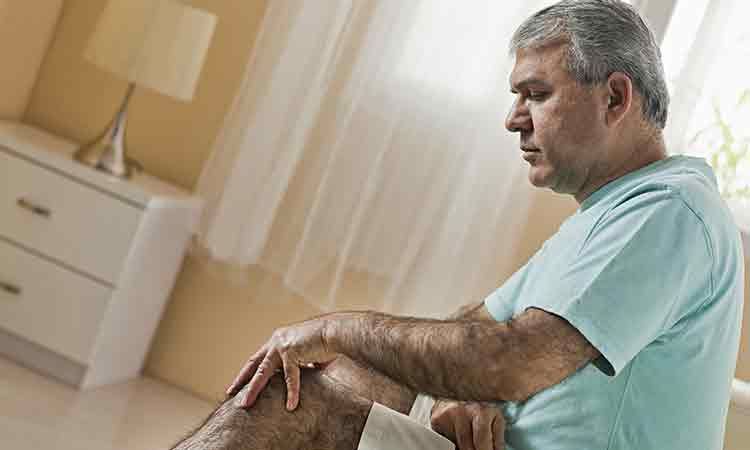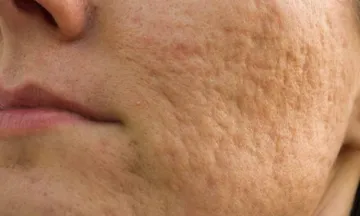How homeopathy treats osteoarthritis and rheumatoid arthritis
Homeopathy treats arthritis, a degenerative disorder of the joints characterised by pain and inflammation, on the basis of what makes the individual and his or her complaints unique - such as the nature of symptoms, personality, sensitivities and emotions. Homeopathy not only relieves joint pain, safely and effectively, it also improves joint health and overall wellness.
Thirty-seven-year-old Tanmay was diagnosed with osteoarthritis (OA) by his orthopaedian, a doctor who specialises in the treatment of injuries or disorders affecting the bones, muscles, joints, and ligaments. No amount of conventional (allopathic) and other medications seemed to work for him, except temporarily. This prompted him to seek homeopathic treatment.
When we analysed his case, we found that Tanmay was overwhelmed by work pressures and a hectic, erratic lifestyle. His high stress levels appeared to be, as his wife observed, the most likely cause of his temper tantrums. Following homeopathic treatment and regular follow-up for over ten months, Tanmay was markedly relieved of his joint agony leading to a change for the better in his attitude both at work and at home.
What is Osteoarthritis?
OA is one of man’s oldest afflictions. By way of medical definition, OA is a chronic disease that involves the breakdown of joints and surrounding tissue. Its name is derived from the Greek, osteo, referring to bones; orthro, to the joints involved; and, itis to the inflammatory process of the disorder. In simple terms, OA may be the consequence, or result, of the typical progression of normal aging, physical injury, chronic joint and oxidative stress, besides genetic factors.
OA is the most common form of arthritic affliction, the other being rheumatoid arthritis (RA). It affects millions of people worldwide, more, in fact, than heart disease and diabetes. The disorder is marked by degenerative changes in the knee, hip, hand, elbow, ankle or spine. Obesity is a significant risk factor for OA with excess weight exerting a load on the joints. Heredity is, likewise, suggested to play a role.
How to recognise Osteoarthritis?
OA is characterised by loss of cartilage and joint degeneration. It varies in its intensity or severity but certainly has the potential to rob you of your basic ability to fully engage in day-to-day activities. So, one could experience just mild pain and stiffness or crippling aches and even joint deformity. When it escalates, it may confine you to bed - even for days at a stretch.
OA commonly affects men between age 40-45 and in women over age 45. Global estimates say that approximately 10 per cent of men and 18 per cent of women aged over 60 years have symptomatic OA.
In its early stages, it may affect one joint, or multiple joints. When not suitably treated, it can, in certain cases, lead to loss of joint function or even deformity.
Since there is no specific blood test for the diagnosis of the disorder, it is important to recognise its symptoms.
The most common OA symptom is pain in the affected joint or joints after repetitive use.
• Pain is usually aggravated by moving the joint or placing weight on it and typically relieved by rest. When the disorder progresses and inflammation develops, pain may become constant
• Stiffness of the affected joint is frequently noticed first thing in the morning and after resting
• Swelling in the arthritic joint which sometimes responds to physical massaging or manipulation
• Deformity can occur with OA due to bone growths and cartilage loss. Bone growths in the end joints of the fingers are called Heberden’s nodes. Bouchard’s nodes refer to bone growths in the middle joints of fingers. Degeneration of knee cartilage can occur in the outward curvature of knees causing bow-leggedness.
• Crepitus, a crackling sound accompanied by a grating sensation, may be noticed when an arthritic joint is moved. This is a result of bone rubbing against bone or roughened cartilage.
What is Rheumatoid Arthritis?
Rheumatoid arthritis (RA) is another form of joint disorder.
It is an autoimmune disorder - a condition in which the immune system mistakenly attacks the joints and surrounding tissues and gradually progresses to assault other systems and organs of the body, including the heart. It often affects the small joints of the hands, wrists, ankles, knees and cervical spine. The shoulders, elbows and hips may be less frequently involved, but the disorder can impinge on major tissues in the body, including the lymph nodes, bone marrow, liver, spleen, kidneys, digestive system, eyes, muscles and nerves. It can also lead to rheumatoid nodules and pleural effusion, or fluid in the lungs, while increasing the risk of heart disease by 40 per cent. Other features include sensitivity of parts and weight loss. When not appropriately or adequately treated, RA can gradually lead to bone, cartilage and ligament damage, including joint deformity.
RA tends to affect more women than men, although no age group is exempt. The disorder appears to peak between age 35 and 55 in women and age 40 to 60 in men. It can also affect the young with a form of arthritis known as juvenile RA that affects people below age 16. If your child has joint pain, swelling and stiffness, consult your doctor and start treatment promptly.
How to recognize Rheumatoid Arthritis?
Research now shows that people who start treatment early, after being diagnosed with joint disorders, have fewer complications and reduced need for surgery when compared to those who start treatment later. So it is crucial to detect the disorder in time. Look out for these signs:
• Symmetric joint pains, usually affecting more than five joints at one time — the small joints of the hands and feet, wrists, ankles, elbows, knees and shoulders. The muscles, tendons, and ligaments surrounding the joints may also be affected
• Morning stiffness. This can last up to a few hours
• Marked swelling of the joints, with pain, heat, redness and limited mobility
• Joint pains that are usually better after rest and worse on movement
• Fatigue, fever and weight loss.
Healing with Homeopathy
The objective of conventional (allopathic) symptomatic treatment is keyed to reduce pain and inflammation.
Homeopathy has a completely different aim and approach. Homeopathy treats arthritis on the basis of what makes the individual and his or her complaints unique - such as the nature of joint symptoms, personality, sensitivities and emotions. Among other symptoms and especially in joint disorders, homeopathy looks at the peculiarity of the direction of pain, for example, whether pain emerges from above downwards or vice versa. The key to homeopathic treatment is how best one can first categorise the symptoms, based on the unique nature and temperament of the individual, and then ‘match’ the appropriate homeopathic remedy to them.
Homeopathy not only relieves joint pain, safely and effectively, it also improves joint health and overall wellness. Homeopathic remedies have been clinically proven to reduce arthritic inflammation, relieve pain and mend the tissues. They also have the ability to stimulate the body’s natural ability to heal from the inside out, and not just on the joint surface. Homeopathy is evidence-based medicine (EBM). It has been clinically shown to be as effective as conventional treatment and far safer in the treatment of joint disorders.
In a study, published in The American Journal of Pain Management, OA patients were split into two groups. They were either given a homeopathic remedy or acetaminophen, a commonly prescribed conventional drug for pain relief in OA. Researchers found that homeopathy provided a level of pain relief that was superior to acetaminophen and produced no adverse reactions.
In studies conducted at a large homeopathic healthcare corporate in India, 93 per cent of OA patients, from a large group of 9,297 patients, reported ‘tangible, better’ pain relief along with long-term clinical improvement.
In a study conducted at Glasgow Homeopathic Hospital, UK, two groups of RA patients were treated with conventional aspirin and individualised homeopathic remedies, respectively. At the end of the study, when the results of the two forms of treatment were compared, evaluated and analysed, researchers reported and confirmed that the group on homeopathic treatment did considerably better than the group on aspirin. More importantly, the group taking homeopathic remedies showed no side-effects.






